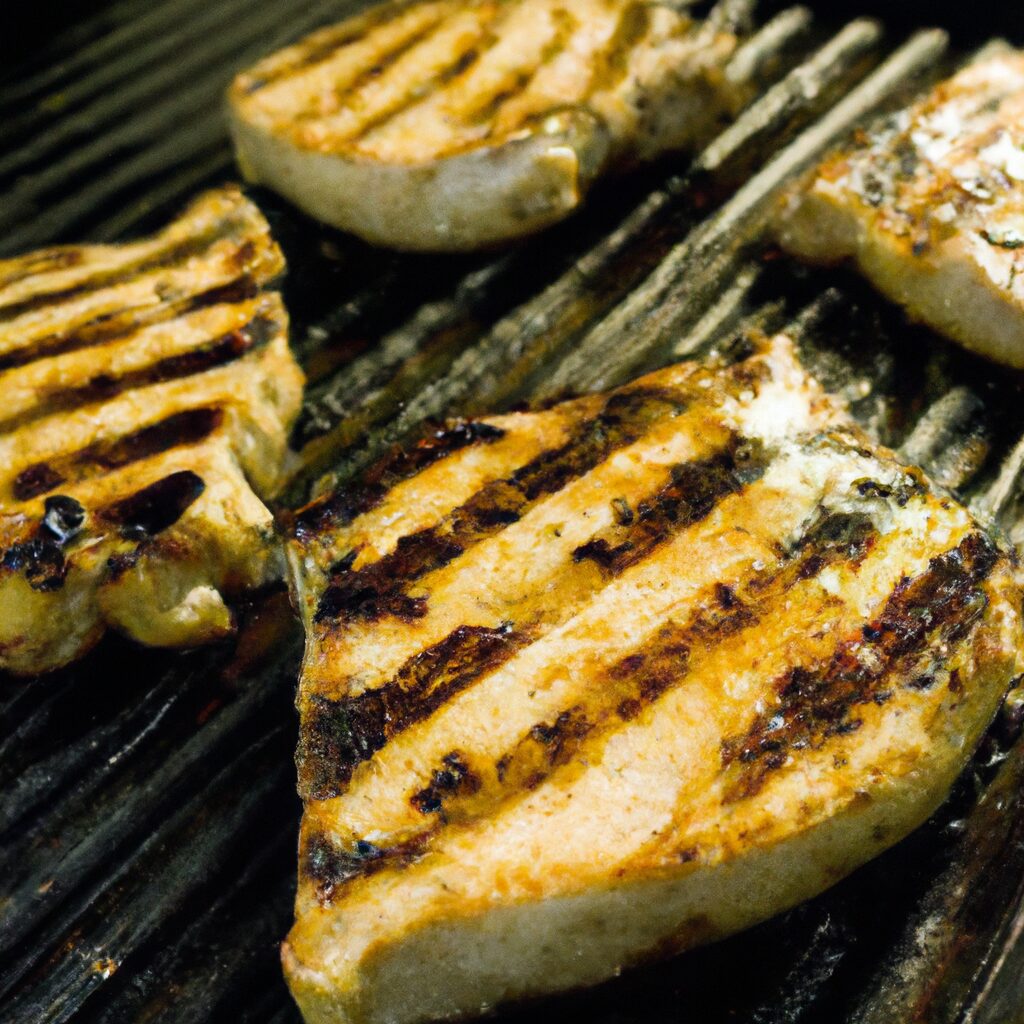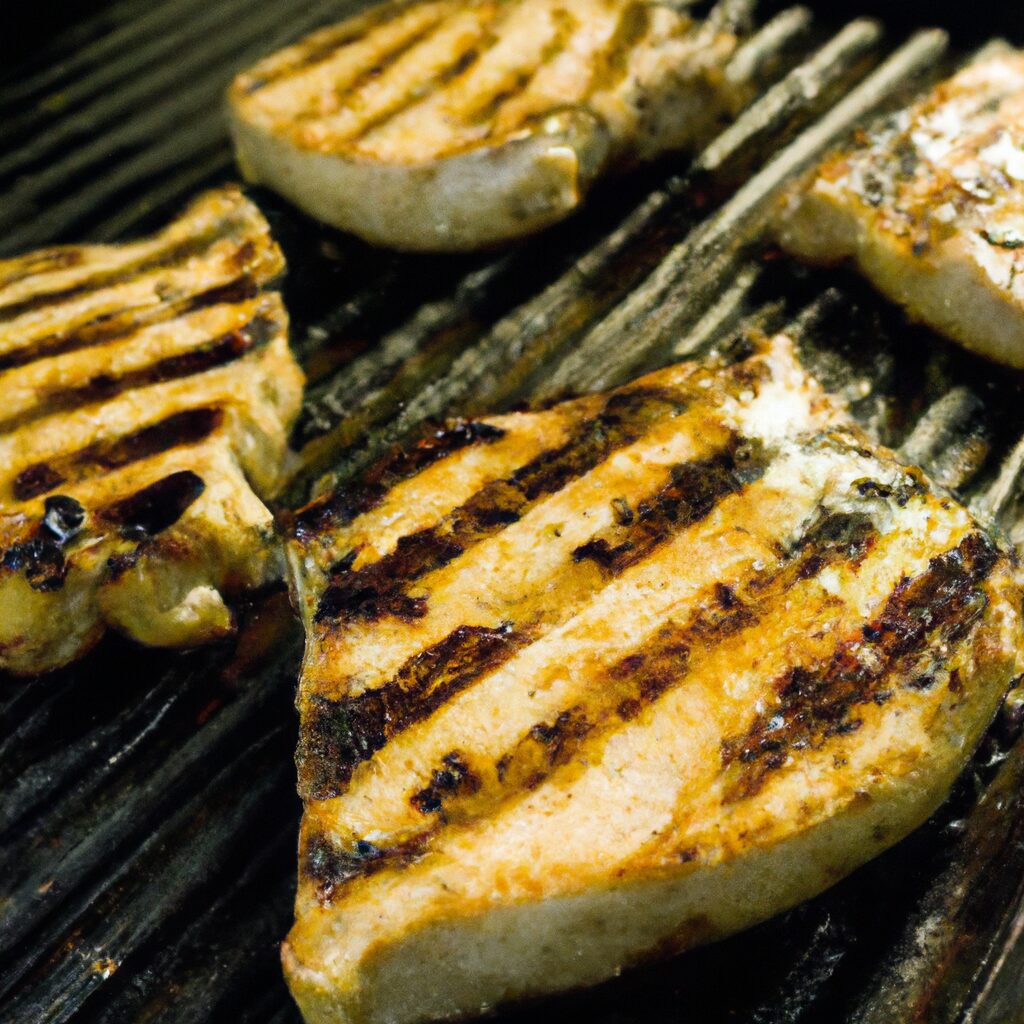
In this article, we are going to share some mouthwatering grilling recipes for pork tenderloin that are perfect for beginners. Whether you’re new to grilling or just looking to try something new, these recipes will surely impress your taste buds. From classic marinades to flavorful rubs, we’ve got you covered with simple and delicious options. So, fire up your grill, grab your apron, and get ready to master the art of grilling pork tenderloin!
Choosing the Right Cut of Pork Tenderloin
Understanding Pork Tenderloin
Before we dive into the different cuts of pork tenderloin and how to prepare them, let’s take a moment to understand what pork tenderloin actually is. Pork tenderloin is a lean and tender cut of meat that comes from the muscle that runs along the backbone of the pig. It is one of the most sought-after cuts of pork due to its tenderness and mild flavor.
Different Cuts of Pork Tenderloin
When it comes to choosing the right cut of pork tenderloin, there are a few options to consider. The most common cuts you’ll come across are whole pork tenderloin, pork tenderloin medallions, and pork tenderloin filets.
-
Whole Pork Tenderloin: This is the entire muscle section taken from the backbone of the pig. It usually weighs between 1 to 1.5 pounds and is cylindrical in shape. This cut is great if you’re looking to cook a larger portion or want to experiment with different cooking techniques.
-
Pork Tenderloin Medallions: Medallions are cross-sectional cuts that are about 1-inch thick. They are perfect for quick and even cooking, making them a popular choice among grill enthusiasts.
-
Pork Tenderloin Filets: Filets are a variation of the medallions, but they’re thinner and longer. They are often used in recipes that require stuffing or wrapping the pork tenderloin.
Selecting the Best Cut
The choice of which cut to go for ultimately depends on your needs and preferences. If you’re looking for versatility and a larger portion, the whole pork tenderloin is the way to go. On the other hand, if you’re short on time and want an easy-to-grill option, medallions or filets would be a better choice. Consider the recipe you’re planning to make, the number of servings required, and the cooking time involved when selecting the best cut of pork tenderloin.
Preparing the Pork Tenderloin for Grilling
Trimming the Pork Tenderloin
Before you start marinating and seasoning the pork tenderloin, it is essential to trim off any excess fat or silver skin. Fat can lead to flare-ups on the grill, while the silver skin can be tough and chewy if not removed. To trim the pork tenderloin, use a sharp knife to carefully cut away any visible fat or silver skin. Make sure to remove as little meat as possible while doing so, as the meat itself is incredibly tender and flavorful.
Marinating the Pork Tenderloin
Marinating the pork tenderloin is a great way to add flavor and enhance its tenderness. There are numerous marinade options available that combine a variety of ingredients such as herbs, spices, oils, and acids. You can experiment with different flavors to create a marinade that suits your taste buds.
To marinate the pork tenderloin, place it in a resealable plastic bag or a shallow dish and pour the marinade over it. Make sure the meat is well-coated on all sides. It is recommended to marinate the pork tenderloin for at least 30 minutes, but for maximum flavor, marinating overnight in the refrigerator works wonders.
Seasoning the Pork Tenderloin
If you prefer a simpler approach or don’t have time to marinate, seasoning the pork tenderloin with a dry rub is an excellent option. A dry rub consists of a mixture of herbs, spices, salt, and pepper that can be rubbed onto the surface of the meat. The rub will create a flavorful crust during grilling.
To season the pork tenderloin, generously sprinkle the dry rub on all sides of the meat, gently pressing it into the surface. Allow the seasoned pork tenderloin to sit for a few minutes before grilling to allow the flavors to penetrate the meat.

This image is property of images.unsplash.com.
Gas Grill vs. Charcoal Grill
Advantages of Using a Gas Grill
Gas grills offer a convenient grilling experience and are a popular choice among many grill enthusiasts. The advantages of using a gas grill include:
-
Ease of Use: Gas grills are incredibly easy to operate. Simply turn on the burners, and you’re ready to start grilling in a matter of minutes.
-
Temperature Control: Gas grills allow for precise temperature control, making it easier to cook the pork tenderloin to perfection.
-
Clean and Efficient: Gas grills produce less smoke and ash compared to charcoal grills, making them easier to clean up after grilling. Additionally, gas grills are more fuel-efficient, reducing the overall cost of grilling.
Advantages of Using a Charcoal Grill
While gas grills have their advantages, many grill enthusiasts swear by the flavor that charcoal grills impart to the food. The advantages of using a charcoal grill include:
-
Smoky Flavor: Charcoal grills produce a distinct smoky flavor that is highly sought after by many grill enthusiasts. The charcoal imparts a unique taste to the pork tenderloin, taking it to a whole new level of deliciousness.
-
High Heat: Charcoal grills reach higher temperatures than gas grills, allowing for excellent searing and caramelization of the meat.
-
Portability: Charcoal grills are often more portable, making them a popular choice for outdoor grilling adventures, such as camping trips or picnics.
Choosing the Right Grill for You
The choice between a gas grill and a charcoal grill ultimately comes down to personal preference. Consider the convenience and ease of use of a gas grill versus the traditional smoky flavor of a charcoal grill. If you prioritize convenience and precise temperature control, a gas grill might be the better option for you. However, if you’re willing to put in a little extra effort for that authentic smoky flavor, a charcoal grill would be a great choice.
Preheating the Grill
Importance of Preheating
Preheating the grill is a crucial step in achieving perfectly grilled pork tenderloin. It allows the grill grates to reach the desired temperature, ensuring even cooking and preventing the pork tenderloin from sticking to the grates.
Preheating a Gas Grill
To preheat a gas grill, start by turning on all the burners to the highest setting and closing the lid. Allow the grill to heat up for about 10 to 15 minutes, or until the temperature reaches around 400°F (200°C). Once the grill is preheated, you’re ready to start grilling the pork tenderloin.
Preheating a Charcoal Grill
Preheating a charcoal grill takes a bit more time and effort, but the results are well worth it. Start by arranging the charcoal briquettes in a pyramid shape at the center of the grill. Light the charcoal using either a chimney starter or lighter fluid, following the manufacturer’s instructions. Allow the charcoal to burn for about 20 to 30 minutes, or until it is covered with gray ash. Spread the hot charcoal evenly across the grill grates and place the lid on the grill. Let it preheat for about 10 minutes before grilling the pork tenderloin.
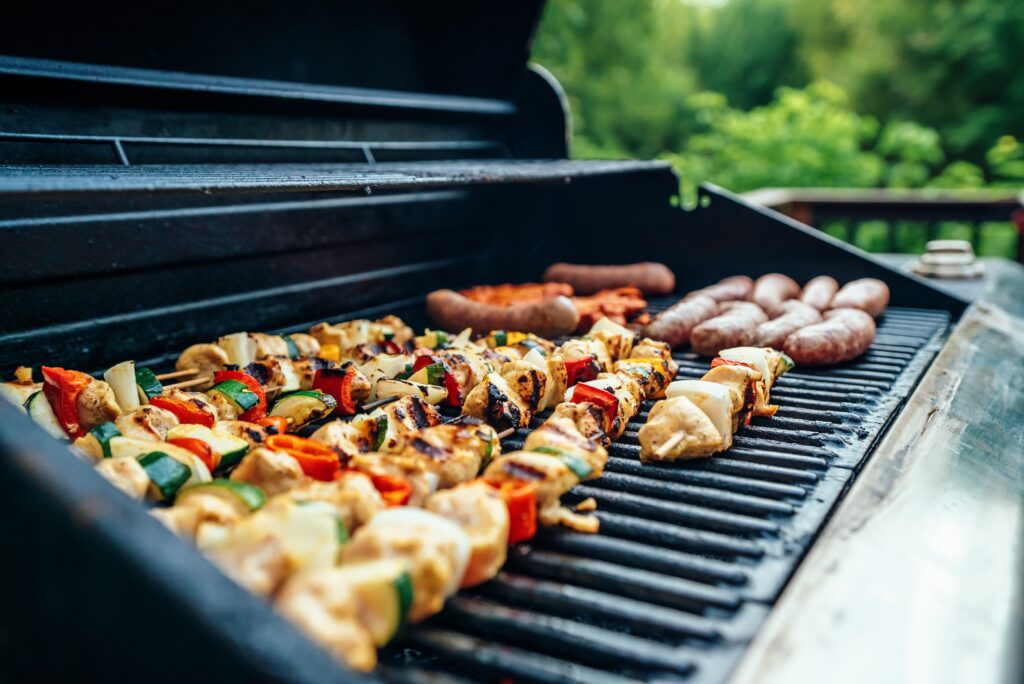
This image is property of images.unsplash.com.
Direct vs. Indirect Heat
Understanding Direct Heat
Direct heat grilling involves cooking the pork tenderloin directly over the heat source. This method is ideal for searing the meat, creating a caramelized crust, and achieving those beautiful grill marks.
Understanding Indirect Heat
Indirect heat grilling involves placing the pork tenderloin away from the direct heat source. This method allows for slower and more even cooking, preventing the meat from drying out.
Choosing the Right Heat Method for Pork Tenderloin
To choose the right heat method for grilling pork tenderloin, consider the size and thickness of the meat. If you’re working with a smaller pork tenderloin, direct heat grilling would be suitable for quick and even cooking. However, if you’re dealing with a larger pork tenderloin, indirect heat grilling would be a better choice to ensure the meat cooks evenly without drying out.
Grilling Techniques for Pork Tenderloin
Grilling Pork Tenderloin over Direct Heat
When grilling pork tenderloin over direct heat, start by preheating the grill to medium-high heat. Place the pork tenderloin directly over the heat source and close the lid. Allow the meat to cook for about 3 to 4 minutes per side, or until a nice char develops. Remember to rotate the pork tenderloin occasionally for even cooking. Once it reaches the desired level of doneness, remove the pork tenderloin from the grill and let it rest before slicing and serving.
Grilling Pork Tenderloin over Indirect Heat
For grilling pork tenderloin over indirect heat, preheat the grill to medium heat. Place the pork tenderloin away from the heat source on the grill grates, making sure there is no direct flame underneath the meat. Close the lid and allow the pork tenderloin to cook for about 20 to 25 minutes per pound, or until it reaches an internal temperature of 145°F (63°C). Keep an eye on the temperature and adjust the heat as needed. Once cooked, remove the pork tenderloin from the grill and let it rest for a few minutes before slicing.
Using the Grill for Searing and Finishing
To achieve a perfect combination of searing and finishing, you can utilize both direct and indirect heat methods. Start by searing the pork tenderloin over direct heat for a few minutes on each side to create a flavorful crust. Then, move the pork tenderloin to the indirect heat zone to finish cooking. This technique gives you the best of both worlds – the caramelized exterior from direct heat and the tender and juicy interior from indirect heat.
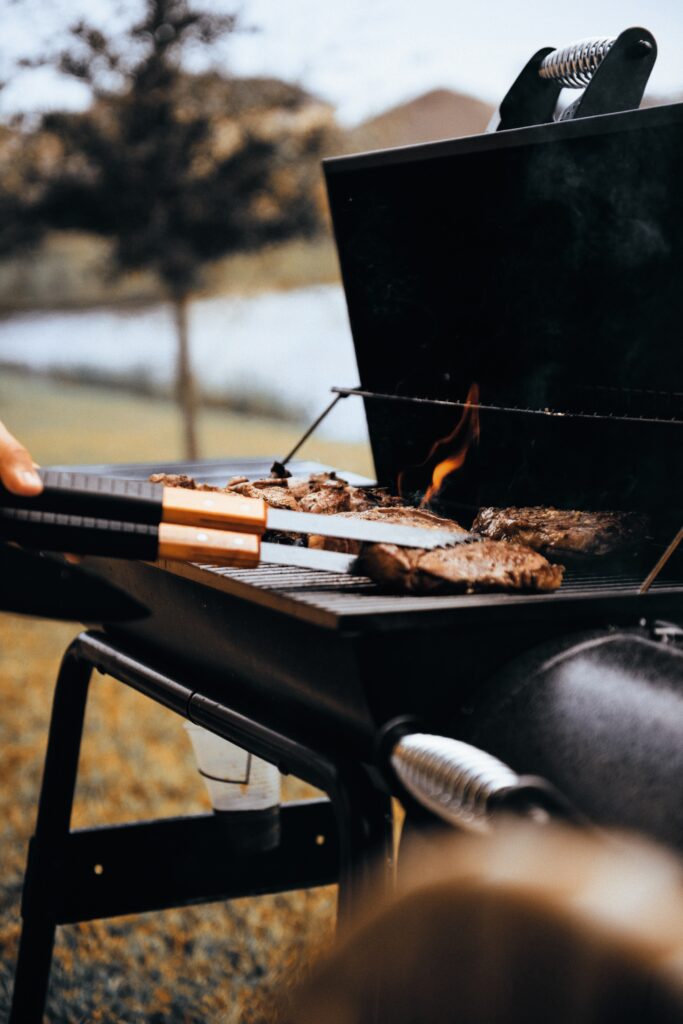
This image is property of images.unsplash.com.
Grilling Time and Temperature
Optimal Grilling Temperature for Pork Tenderloin
The optimal grilling temperature for pork tenderloin is around 350°F to 400°F (175°C to 200°C). This temperature range allows for thorough cooking without drying out the meat.
How to Determine Grilling Time
The grilling time for pork tenderloin depends on various factors such as the size of the cut, the heat method used, and personal preference for doneness. As a general guideline, plan for about 15 to 20 minutes of total grilling time per pound of pork tenderloin. However, it is crucial to use a meat thermometer to determine the exact grilling time. The internal temperature of the pork tenderloin should reach 145°F (63°C) for a perfectly cooked and safe-to-eat result.
Using a Meat Thermometer for Accuracy
Using a meat thermometer is the most accurate way to determine the doneness of pork tenderloin. Insert the thermometer into the thickest part of the meat, avoiding contact with the bone if present. The internal temperature should read 145°F (63°C) for medium to medium-rare pork tenderloin. Keep in mind that the temperature will rise a few degrees while the meat rests, so it is essential to remove the pork tenderloin from the grill slightly before it reaches the desired temperature.
Tips for Juicy and Tender Pork Tenderloin
Avoiding Overcooking
To prevent overcooking, it is crucial to cook the pork tenderloin to the appropriate internal temperature and avoid leaving it on the grill for too long. Overcooking can result in dry and tough meat.
Basting with Marinade
A great way to add extra flavor and moisture to the pork tenderloin is by basting it with the marinade during the grilling process. Brush the marinade onto the meat using a basting brush, turning and basting the pork tenderloin every few minutes. This technique helps to keep the meat juicy and enhances the overall flavor.
Resting the Pork Tenderloin
After grilling, it is essential to let the pork tenderloin rest for about 5 to 10 minutes before slicing. Resting allows the juices to redistribute within the meat, resulting in a juicier and more tender final product. Tent the pork tenderloin with aluminum foil to retain the heat while it rests.
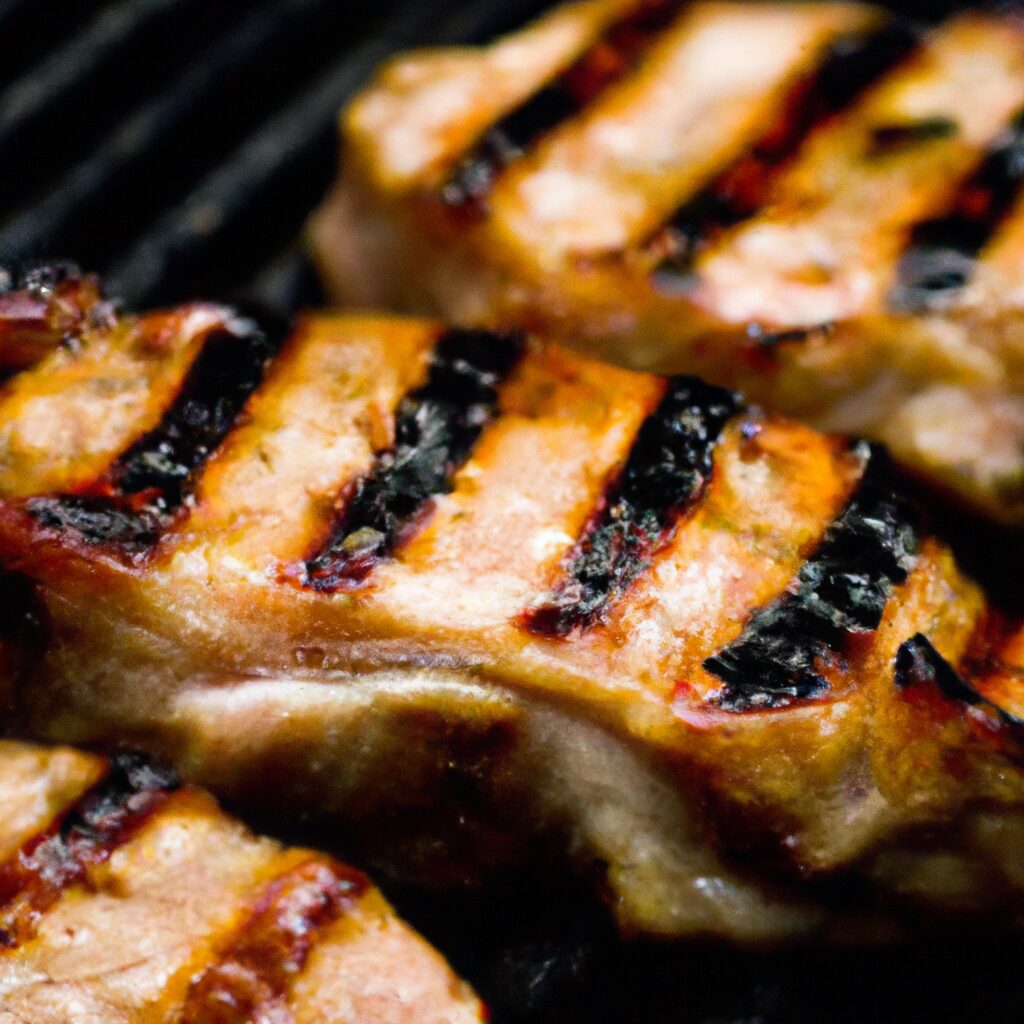
Grilling Pork Tenderloin with Different Flavors
Classic BBQ Pork Tenderloin
To create a classic BBQ flavor, marinate the pork tenderloin in a mixture of BBQ sauce, garlic, brown sugar, Worcestershire sauce, and spices. The marinade infuses the meat with smoky and sweet flavors, resulting in a mouthwatering BBQ pork tenderloin.
Asian-inspired Grilled Pork Tenderloin
For an Asian-inspired twist, marinade the pork tenderloin in a mixture of soy sauce, ginger, garlic, honey, and sesame oil. This marinade adds a savory and slightly sweet flavor to the pork tenderloin that pairs well with stir-fried vegetables or a refreshing Asian-inspired salad.
Herb and Garlic Pork Tenderloin
If you prefer a more herbaceous and aromatic flavor, create a marinade with fresh herbs such as rosemary, thyme, and oregano, along with garlic, lemon zest, olive oil, salt, and pepper. This combination infuses the pork tenderloin with a fragrant and savory taste that is simply irresistible.
Serving and Presentation
Slicing and Plating the Pork Tenderloin
When it comes to slicing the pork tenderloin, it is essential to cut against the grain. Cutting against the grain ensures tender and bite-sized pieces of meat. To plate the pork tenderloin, arrange the slices on a serving platter or individual plates, placing the slices slightly overlapping for an aesthetically pleasing presentation.
Accompaniments and Side Dishes
Pork tenderloin pairs well with a variety of side dishes and accompaniments. Some popular options include roasted vegetables, mashed potatoes, grilled corn on the cob, or a fresh green salad. Consider the flavors of the marinade or rub used and choose sides that complement the main dish.
Garnishing for a Beautiful Presentation
To elevate the presentation of your grilled pork tenderloin, consider garnishing with fresh herbs, such as parsley or cilantro, to add a pop of color. You can also sprinkle some cracked black pepper or drizzle with a sauce like a balsamic glaze for an added touch of elegance.
With this comprehensive guide to grilling pork tenderloin, you are armed with the knowledge and techniques needed to create mouthwatering and tender results every time. Whether you prefer the convenience of a gas grill or the smoky flavor of a charcoal grill, you’ll be able to impress your friends and family with your grilling prowess. So fire up the grill, choose your favorite cut of pork tenderloin, and let the grilling adventure begin!
